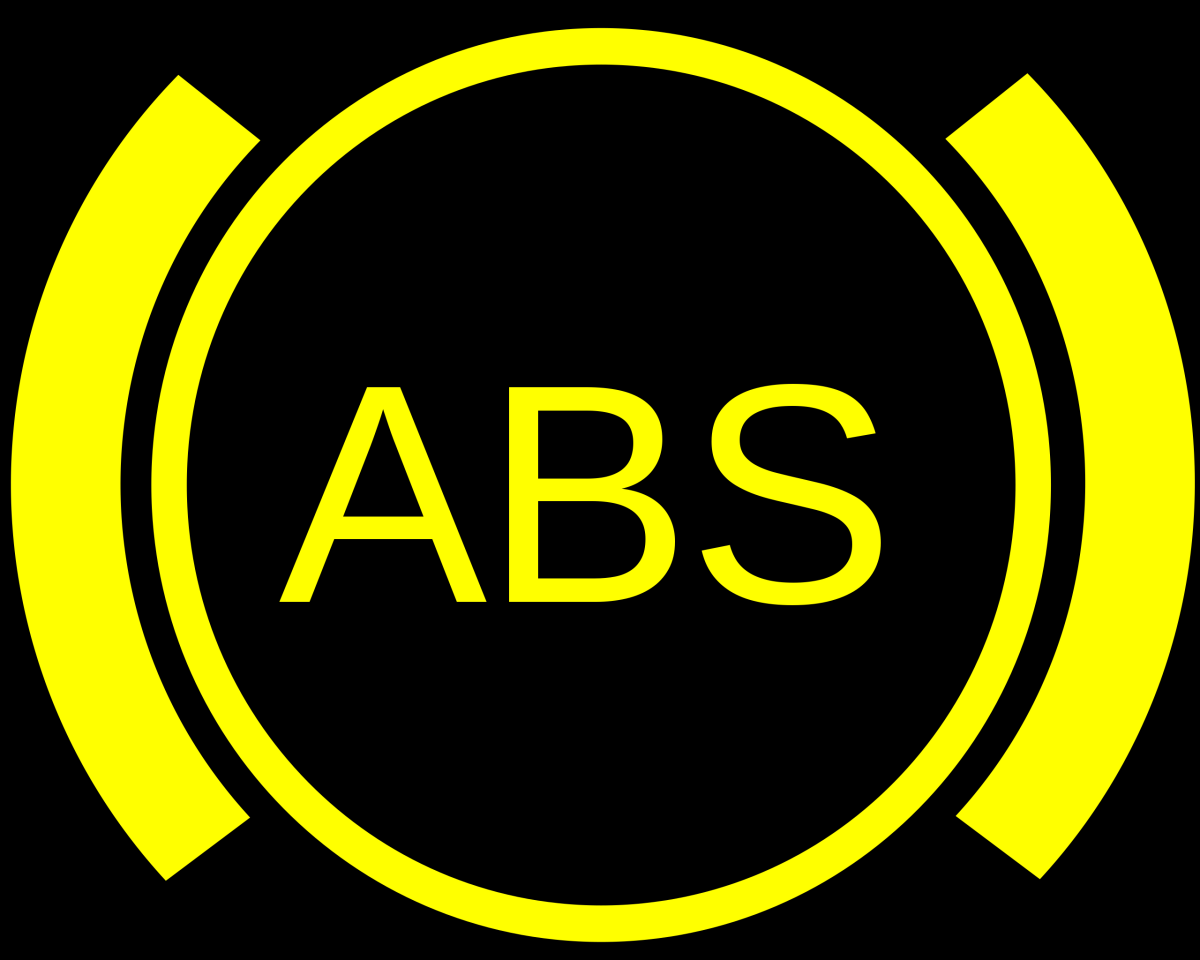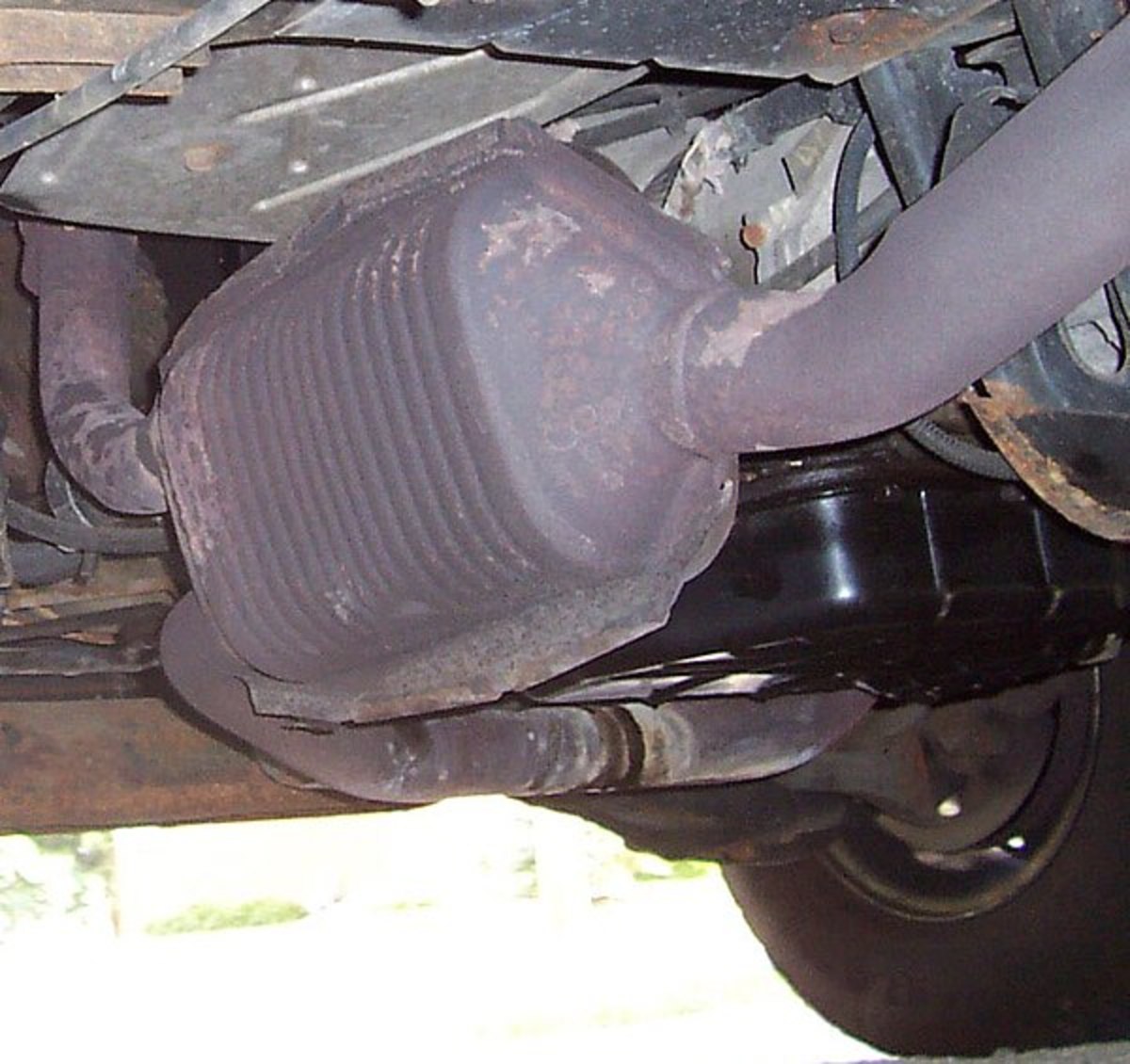Replacing a Diesel Fuel Filter
New Fuel Filter
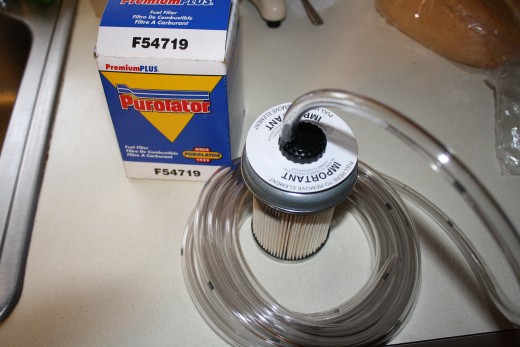
Getting Dirty
If your diesel is relatively new, this isn't a dirty job, but after a few hundred thousand miles (diesels can easily last a half million to a couple million miles and more if well maintained) expect the engine compartment to be a little grungy.
Good fuel quality is essential for your diesel engine. Even tiny amounts of water can ruin your expensive injector pump and injectors. Also, it doesn't take much grime to plug an injector. Your fuel filter not only removes these microscopic bits from the fuel, but also separates water which may be present and collects it in the bottom of the filter housing. The filter housing also has a heater that kicks in at about 40 degrees F to prevent the waxes in the fuel from solidifying and plugging up the injectors on a cold start.
A good quality filter is essential to properly clean the fuel, remove water droplets, and ease replacement. Some cheaper filters don't quite fit the housing without a lot of effort and frustration.
Collect your parts and tools. You'll need the correct filter. They cost from $17 to $30 or more. Price is not an indication of quality. Filters at the lower price range sometimes outperform the most expensive. In addition, you'll need a socket, ratchet and extension, maybe a large flat blade screwdriver, hammer, drain tube, multi-purpose grease and pliers. My bleed drain hose is clear PVC, 7/16" inside diameter.
GM Diesel Fuel Filter
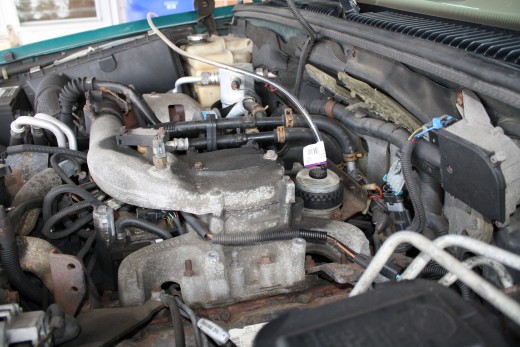
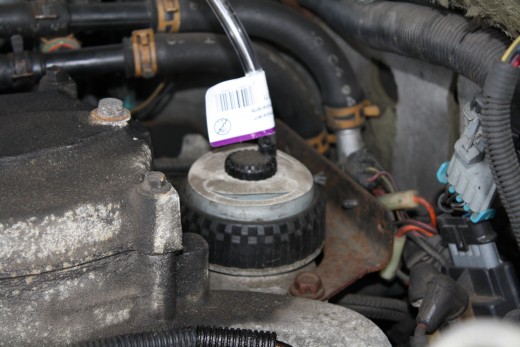

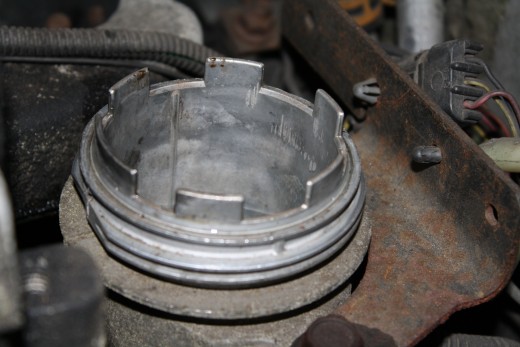

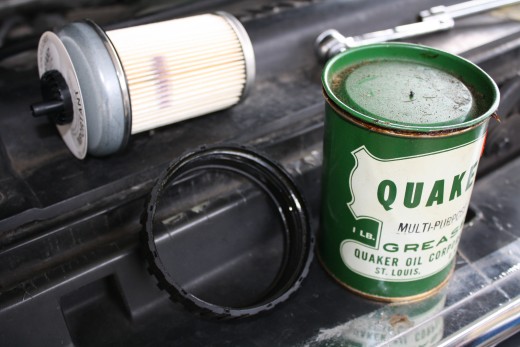
Intake Manifold Cover and Remote Drain Valve
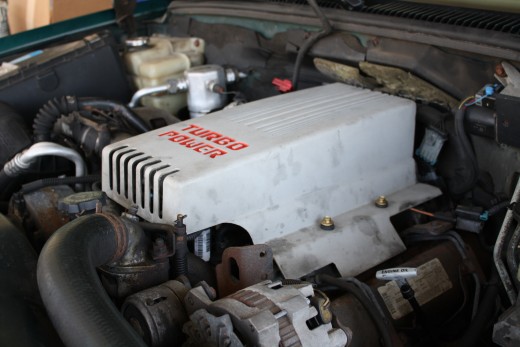
1. Remove the intake manifold cover and set aside.
It's attached by four 10mm captive bolts. These captive bolts are held in place by rubber grommets after they have been completely unscrewed from the intake manifold.
2. Drain the grime
Run the filter drain hose to a container suitable to catch diesel fuel and open the drain valve.
You may need pliers to loosen the valve, which can be mounted just about anywhere along the drain hose. The drain hose starts at the bottom of the filter housing. Trace it until you find the valve. On this Suburban it was conveniently placed at the front of the engine, shown in the photograph at the front corner of the manifold cover.
If your valve is higher than the fuel filter housing, as it was in this case, you'll need fuel pressure to drain the water and grime from the bowl. Turn on the ignition but do not start the engine. The lift pump will start and push the contents of the filter housing out the drain tube. You only need to push a few ounces of fuel out until the fuel runs clear.
Turn off the ignition first and then tighten the drain valve. This will relieve pressure in the filter. If you tighten the drain valve and then turn off the ignition, the fuel filter housing will be pressurized.
3. Remove the old filter
Loosen the bleed valve at the top of the filter. It's the small black circle with an integrated bleed hose nipple. This will assure the housing is no longer pressurized.
Remove the filter retaining ring, the large ribbed plastic ring around the top of the filter housing. If it is too difficult to remove by hand, position a large screwdriver on a rib and TAP lightly with a hammer to loosen.
With the ring removed, the filter lifts straight up and out.
4. Clean the housing
Check the bottom of the housing for foreign matter, and clean if necessary.
5. Install the new filter
Carefully install the new filter paying attention to the large slot on the filter and large tab on the housing (see illustrations above). Don't twist the filter into the housing -- align the tabs and press straight down until the filter is fully seated. Twisting or repeated insertion/removal will damage the sealing gasket and you'll be heading to the parts store for a new filter.
Clean the threads on the retaining ring and lightly lubricate with all-purpose grease to ease the next filter change. Screw the ring on the housing, being careful not to cross-thread it. If you have trouble getting the threads to align, the filter may not be inserted all the way into the housing.
6. Bleed air from the system
Air in a high pressure diesel fuel system plays havoc with your engine. To remove the air you introduced by opening the filter housing, attach your bleed hose to the nipple at the top of the filter and run to a suitable diesel fuel container.
Turn the bleed valve about an 1/8 turn open (counter-clockwise).
Turn on the ignition but don't start the engine. The lift pump should run continuously. If you used a clear pvc tube you will see fuel and lots of air bubbles traveling through the tube. If fuel is not running through the tube, open the bleed valve a little more. If fuel is running out of the top of the filter around the bleed valve, the valve is open too far. Let the pump run until the fuel is clear without air bubbles.
Tighten the bleed valve and then turn off the ignition. The fuel lift pump should stop.
7. Remove the bleed hose
Quickly pull the hose and cap the end. Drain it into your waste container. Do not reuse this fuel if there is any water or debris in the fuel, which is likely.
Clean up any spilled fuel.
8. Start your engines!
Check for leaks at the drain tube, drain valve, and bleed valve.
Don't worry if your diesel runs a little rough for a minute or two, or if it was a little hard to start. You bled the air from the low pressure side, but probably introduced air in the line from the filter to the high pressure pump. This air will evacuate through the injectors causing some stumble and more will be pushed in the return line back to the fuel tank when it escapes through the tank vent.
After a minute or two, you should have smooth idle and restored power. Turn off the engine.
9. Replace the Intake Manifold Cover
Replace the cover, align the 4 bolts with their holes in the manifold and tighten to specifications.


